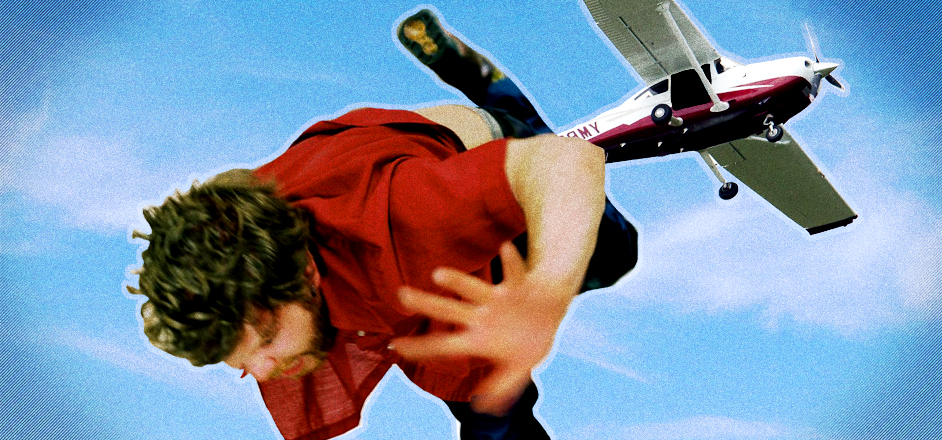In Mexico, there's a new, awful kind of precipitation: there's rain and sleet and hail.
And, now, bodies.
Though the Drug War has been cruel and bloody for decades, it reached new heights of insanity two weeks ago. That's when an airplane flew low over Sinaloa and bodies sailed out the door. All three landed in a populated area. One thudded onto the roof of a health clinic.
No one is sure who did it. But the town, Eldorado, is the stomping ground of "Shorty" Guzman's Sinaloa drug cartel, which has a grim history of showcasing its victims' suffering, including tossing dead enemies on the sides of roads and hanging them from bridges. The violence there has been increasing since Guzman's arrest last year and extradition to New York, reported the Washington Post, as gangs claw their way into the power vacuum left by Guzman's arrest. Mostly, the territory has been run by Shorty's lieutenant, Damaso "The Graduate" Lopez, though he was caught earlier this week. His power vacuum will likely be filled with blood, too.
In this latest show of depravity, the plane's cargo showed signs of torture, and the body that banged the clinic had a bag over its head, reported the newspaper Millenio.
The website Radio Formula reports that there's no precedent for this kind of "delivery" in the Mexican Drug War. Caroline S. Conzelman, PhD, who teaches about the history of the worldwide drug trade at the University of Colorado Boulder, said she'd never heard of sending bodies into town squares, anywhere during any drug war. Usually that's too grim, even for the vampires in the cartels, she said.
But, shockingly, Conzelman said, jettisoning your enemies from aircraft is an old sobering gesture, both in movies and in real life. Even before the fictional Scarface's associate hung some poor soul from a helicopter, real-life dictators and dickheads in Latin America and Africa were making it rain — in a horrible way.
This was such a popular move during the civil wars and dictatorships of Latin America a generation ago that they even have a name in Spanish: Vuelos de la Muerte. Death Flights.
But their purpose was fundamentally different from the purpose of these recent Death Flights. They weren't trying to make an impact on the local populace, to have the bodies scooped up by police and photographed by newspapers. Usually, it was an effort to hide their actions, to make the bodies disappear. That's why the vast majority of the Death Flights happened over the ocean, Conzelman said. Bye bye evidence.
About 10,000 people were "disappeared" by the military during the Argentine Dirty War, from 1976 to 1983. No one is sure how many of those disappeared people ended their sad tortured lives doing a triple gainer into the Pacific Ocean. But, after it was over, one military confessor said that the flights happened every Wednesday for two years, and that as many as 2,000 people were disappeared that way. Even a Nobel Peace Prize winner said he was in a Death Flight that, at the last minute, was diverted, sparing his life.
In the Algerian War, from 1954 to 1962, French paratroopers dropped enemies into the Mediterranean Sea. The dead bodies were nicknamed "shrimps." When the bodies started inconveniently bobbing up, the troopers tied cinder blocks to their feet. The French did the same while stomping out an uprising in Madagascar.
And the demonic dictator of Zaire, Mobutu Sese Seko, killed an unknown number of people in the 1990s using gravity, a helicopter and local river rapids.
It's not likely that United States government has chartered a lot of Death Flights, but, remember: our government did push Osama bin Laden's body out of an airplane into the sea. Because Death Flights are about disposing of evidence.
It's shocking that Death Flights, which even close students of the drug wars like Conzelman thought were history, have taken flight again. And it's even more shocking that the cartels are, for the first time, doing it over populated areas. It's more evidence that nobody gives fewer fucks than a Mexican narco.
The Mexican Drug War, caused in part by the United State's failed Drug War policies, is full of ugly surprises — and might not yet have reached its darkest hours.





Leave a Reply
You must be logged in to post a comment.